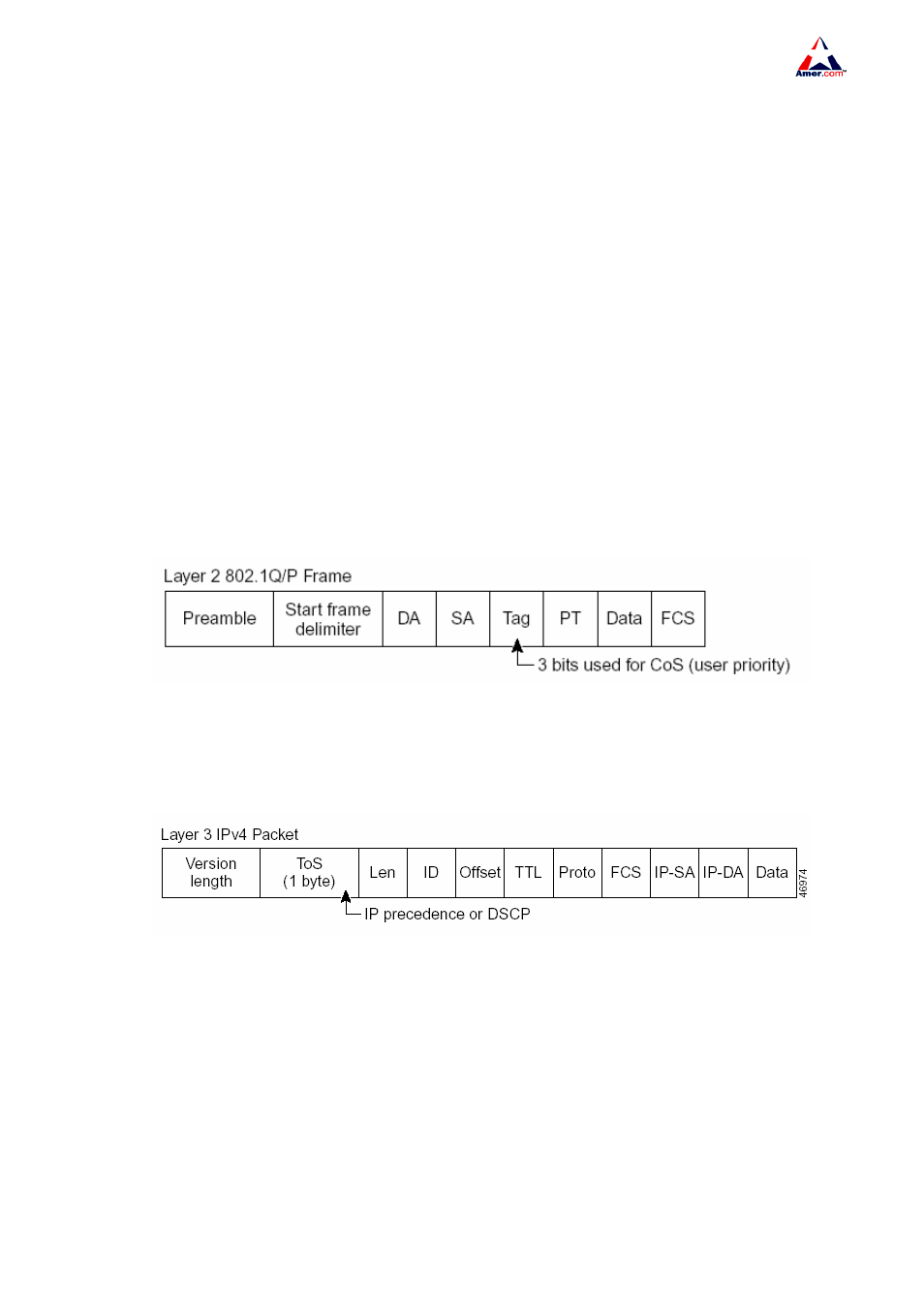Chapter 22 qos configuration, 1 introduction to qos, 1 qos terms – Amer Networks SS2R48G4i V2 User Manual
Page 185

SS2R24G4i/SS2R48G4i
174
Chapter 22 QoS Configuration
22.1 Introduction to QoS
QoS (Quality of Service) is a set of capabilities that allow you to create differentiated services for
network traffic, thereby providing better service for selected network traffic. QoS is a guarantee for
service quality of consistent and predictable data transfer service to fulfill program requirements. QoS
cannot generate extra bandwidth but provides more effective bandwidth management according to the
application requirement and network management policy.
22.1.1 QoS Terms
QoS Class of Service, the classification information carried by Layer 2 802.1Q frames, taking 3 bits of
the Tag field in frame header, is called user priority level in the range of 0 to 7.
Fig 22-1 CoS priority
ToS
Type of Service, a one-byte field carried in Layer 3 IPv4 packet header to symbolize the service
type of IP packets. Among ToS field can be IP Precedence value or DSCP value.
Fig 22-2 ToS priority
IP Precedence
IP priority.Classification information carried in Layer 3 IP packet header, occupying 3
bits, in the range of 0 to 7.
DSCP
Differentiated Services Code Point, classification information carried in Layer 3 IP packet header,
occupying 6 bits, in the range of 0 to 63, and is downward compatible with IP Precedence.
Classification
The entry action of QoS, classifying packet traffic according to the classification
information carried in the packet and ACLs.
Policing
Ingress action of QoS that lays down the policing policy and manages the classified
packets.
Remark
Ingress action of QoS, perform allowing, degrading or discarding operations to packets